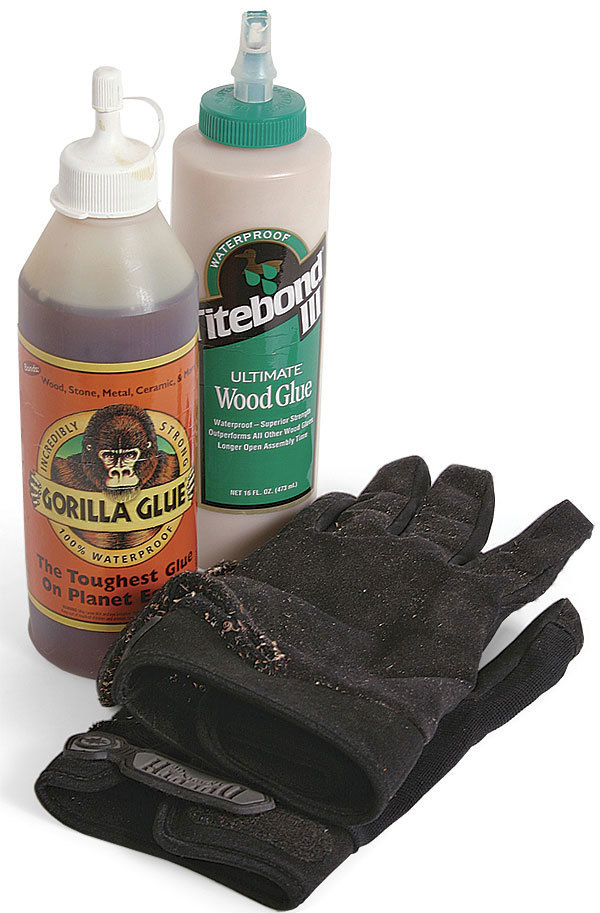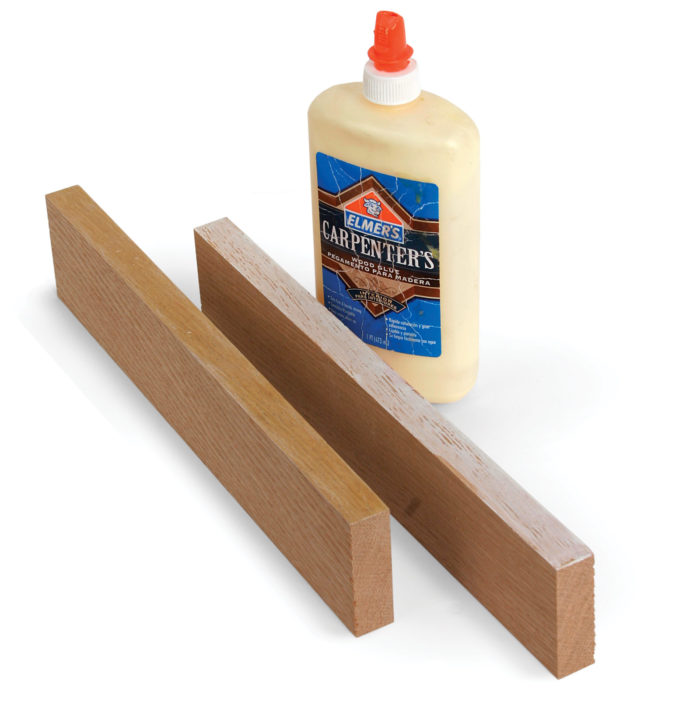Have you ever wondered how cold is too cold for wood glue? Well, you’re in the right place! If you love working with wood and enjoy DIY projects, understanding the limits of wood glue in different temperatures is essential. In this article, we’ll explore the fascinating world of wood glue and discover the ideal temperature range for achieving strong, durable bonds. So let’s dive in and uncover the secrets of working with wood glue in various temperatures!
When it comes to using wood glue, temperature plays a crucial role in the success of your project. Cold temperatures can affect the curing process, making it harder for the glue to set properly. But how cold is too cold? That’s the question we aim to answer today! Whether you’re working in freezing winter conditions or contemplating a project in a chilly workshop, we’ve got you covered. By the end of this article, you’ll be equipped with the knowledge you need to make informed decisions and ensure your wood glue bonds are as strong as can be.
Now, you might be thinking, “Why does temperature even matter for wood glue?” It’s a great question! Temperature affects the chemical reactions that occur during the curing process of wood glue. If it’s too cold, the glue may not cure properly, resulting in weak bonds that can easily break. On the other hand, if it’s too hot, the glue can dry too quickly, compromising its ability to create a strong bond. That’s why understanding the ideal temperature range for wood glue is crucial. So let’s explore the different temperature thresholds and how they can impact your woodworking projects.

How Cold is Too Cold for Wood Glue?
When it comes to woodworking, using the right adhesive is crucial for creating strong and durable bonds. One commonly used adhesive is wood glue, which provides excellent bonding properties for joining wood pieces together. However, like many other materials, wood glue has temperature limitations. In this article, we will explore how cold is too cold for wood glue, the consequences of using it in low temperatures, and tips to ensure successful bonding even in chilly conditions.
Effects of Cold Temperature on Wood Glue
Wood glue typically has an optimal working temperature range specified by the manufacturer. This range is usually between 55°F (13°C) and 80°F (27°C). When the temperature drops below this range, the performance of wood glue can be compromised. Cold temperatures slow down the curing process of the glue, resulting in longer drying times and decreased bond strength. Additionally, excessive cold can cause the glue to become thick and difficult to spread, affecting its ability to penetrate the wood fibers and create a strong bond.
Consequences of Using Wood Glue in Cold Temperatures
Using wood glue in temperatures below its recommended working range can lead to several undesirable consequences. Firstly, the extended drying time can result in the wood pieces being held together for a longer duration, which may require clamping for an extended period. This can be inconvenient if you have limited clamps or need to move the project while waiting for the glue to dry. Secondly, a weaker bond can be formed due to the slower curing process, compromising the overall strength and durability of the joint. Thirdly, the thicker consistency of the glue in cold temperatures can make it challenging to achieve an even spread, potentially leading to areas of weak adhesion and uneven surfaces.
To add insult to injury, if the temperature drops significantly below freezing point, the water-based components of some wood glues can freeze. Freezing can render the adhesive unusable, causing irreversible damage to its chemical structure and rendering it ineffective for bonding wood.
Optimal Temperature for Wood Glue Application
To ensure the best results when using wood glue, it is recommended to work within the manufacturer’s specified temperature range. Generally, a temperature between 60°F (15.5°C) and 75°F (24°C) is considered optimal for wood glue application. Operating within this range will ensure proper curing times, strong bonds, and ease of application.
Tips for Using Wood Glue in Cold Conditions
If circumstances necessitate working with wood glue in colder temperatures, there are several tips to help improve the bonding process:
- Preheat the workspace: If possible, warm up the area where you will be applying the glue. This can be done by using a space heater or working in a temperature-controlled environment. Remember to avoid direct heat application to the wood, as it may cause warping or damage.
- Pre-warm the wood: If your woodworking project allows, store the wood in a warmer location before applying the glue. This will help prevent rapid heat loss when the cold glue is applied, allowing for better flow and penetration into the wood fibers.
- Use a rapid-curing glue: Consider using a wood glue specifically formulated for colder conditions. These glues are designed to cure at a faster rate in lower temperatures, compensating for the slower curing caused by the cold environment.
- Ensure proper clamping: In colder temperatures, it may be necessary to extend the clamping time to ensure a strong bond. Follow the manufacturer’s instructions for recommended clamping times, which may be longer than usual in colder conditions.
- Allow for extra drying time: Be patient and give the glue ample time to dry and cure. Avoid rushing the process, as premature stress on the bond can result in weaker joints.
Conclusion
Wood glue is a versatile and reliable adhesive when used correctly. However, it does have temperature limitations, and understanding how cold is too cold for wood glue is essential for achieving strong and durable bonds. Working within the optimal temperature range specified by the manufacturer will lead to the best results. If working in colder conditions is unavoidable, following the tips mentioned above can help improve the bonding process and ensure satisfactory results. By taking these precautions, you can confidently use wood glue in various weather conditions while maintaining the integrity of your woodworking projects.
Key Takeaways: How Cold Is Too Cold for Wood Glue?
- Wood glue should not be used in temperatures below 50°F (10°C).
- Extreme cold can cause wood glue to freeze and lose its adhesive properties.
- Using wood glue in cold temperatures can result in weak bond strength.
- It is advisable to store wood glue in a temperature-controlled environment.
- Using a heat gun or warm water can help improve the performance of wood glue in cold weather.
Frequently Asked Questions
When it comes to using wood glue, temperature plays a crucial role in ensuring a strong bond. Here are some common questions regarding how cold is too cold for wood glue:
1. Can I use wood glue in freezing temperatures?
It is generally not recommended to use wood glue in freezing temperatures. Most wood glues have a minimum application temperature indicated on the label, which is typically above freezing. When the temperature drops below this minimum, the glue may not cure properly, resulting in a weak bond.
Additionally, freezing temperatures can affect the consistency of the glue, causing it to thicken or even freeze, making it difficult to apply evenly. It is best to wait for the temperature to rise above the minimum application temperature indicated on the glue’s label before using it.
2. How cold is too cold for wood glue?
The specific temperature at which wood glue becomes too cold varies depending on the brand and type of glue. However, as a general guideline, most wood glues should not be used below 50°F (10°C). Below this temperature, the glue may not cure properly and may result in a weak bond.
To ensure the best results, it is recommended to check the label or instructions of the wood glue product you are using. The manufacturer usually specifies the minimum temperature at which the glue can be applied and cured effectively. Following these guidelines will help you achieve strong and durable wood joints.
3. What happens if I use wood glue in cold temperatures?
Using wood glue in cold temperatures can lead to various issues. The glue may not cure properly, resulting in a weak bond that may eventually fail under stress. In addition, the cold temperature can affect the viscosity of the glue, making it thicker and more challenging to spread evenly.
Moreover, cold temperatures can slow down the curing process, prolonging the time it takes for the glue to dry and reach its maximum strength. This can be problematic when working on projects with time-sensitive deadlines. To ensure a successful bond, it is best to use wood glue within the recommended temperature range.
4. Can I warm up wood glue to use it in cold temperatures?
While it may be tempting to warm up wood glue to use it in cold temperatures, it is not recommended. Heating the glue can alter its chemical properties and affect its performance. Additionally, excessive heat can cause the glue to cure too quickly, leading to a weak bond.
If you need to use wood glue in cold temperatures, it is better to store the glue in a warmer environment before application. Bringing it to room temperature helps ensure that the glue flows properly and cures effectively. Always consult the manufacturer’s instructions for the specific product you are using to determine the best storage and application temperatures.
5. Are there any wood glues specifically designed for cold temperatures?
Yes, there are wood glues available on the market that are formulated to perform well in cold temperatures. These specialized cold-weather wood glues have lower minimum application temperatures and can cure effectively even in below-freezing conditions.
If you anticipate working in cold environments or during winter, it is advisable to look for wood glues labeled as “cold weather” or “all-weather” glues. These products are designed to maintain their efficacy and bond strength in colder temperatures. Always read the product specifications and follow the manufacturer’s instructions for optimal results.

Cold temperatures affect the strength of your glue. #woodwork #woodglue #titebond
Summary
Wood glue works best in temperatures between 55°F and 85°F. When it gets cold, the glue becomes less effective, and it takes longer to dry. Extreme cold can even cause the glue to freeze and lose its bonding properties. So, it’s important to keep your wood glue in a warm environment and avoid using it in freezing temperatures.
In colder weather, it’s a good idea to warm up the wood and the glue before applying. You can use a heat gun or simply leave the glue and wood in a warm room for a while. Remember, always follow the instructions on the glue bottle and allow enough time for the glue to fully dry. By taking these precautions, you can ensure that your wood projects stick together properly, even in chilly weather.
